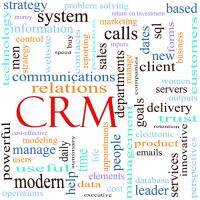In which Jill confirms that everyone who runs backwards does so awkwardly.
It’s a familiar story. An executive at a Fortune 1000 company leaves to start his own business. The market craters, his business falters, and he returns hat in hand to his old firm and resumes his old job. This just happened to a client of mine, a brilliant marketing guy who tried to launch a consulting firm just as companies were cutting back. He re-joined his former employer, a specialty retailer, and took up where he left off. We caught up over drinks a few weeks ago and I asked him what had changed between his departure and his return.
“Everything,” he said with a deadpan look on his face. I couldn’t tell whether this was good news or bad news. Knowing his planning skills, I was hoping that during his absence the retailer had taken his vision of smaller customer segments and multi-channel inbound and outbound outreach and executed on it, and was now celebrating explosive profitability and jaw-dropping sales uplift.
But that wasn’t what he meant. In fact, my friend explained, his company had regressed since he’d left. The CRM system he’d acquired in his position as Executive Vice President …
In which Jill confirms that everyone who runs backwards does so awkwardly.
It’s a familiar story. An executive at a Fortune 1000 company leaves to start his own business. The market craters, his business falters, and he returns hat in hand to his old firm and resumes his old job. This just happened to a client of mine, a brilliant marketing guy who tried to launch a consulting firm just as companies were cutting back. He re-joined his former employer, a specialty retailer, and took up where he left off. We caught up over drinks a few weeks ago and I asked him what had changed between his departure and his return.
“Everything,” he said with a deadpan look on his face. I couldn’t tell whether this was good news or bad news. Knowing his planning skills, I was hoping that during his absence the retailer had taken his vision of smaller customer segments and multi-channel inbound and outbound outreach and executed on it, and was now celebrating explosive profitability and jaw-dropping sales uplift.
But that wasn’t what he meant. In fact, my friend explained, his company had regressed since he’d left. The CRM system he’d acquired in his position as Executive Vice President of Customer Marketing had been decommissioned. The team he built had scattered across departments and regions, and to competitors. Membership in the retailer’s loyalty program had shrunk, as had the percentage of return shoppers and the number of items in their market baskets. Everything had changed alright.
“It’s as if I’d never worked here,” my friend lamented. “I’m starting back at square one. Only this time I have a smaller budget than before and fewer direct reports.” He took a forlorn swig of his single-malt as we discussed what it would take to get him back on track.
It’s true that in a down economy laggard and leaderless companies stagnate. They delay key projects, instead hunkering down while awaiting the salvation of an economic rebound. Fear and paranoia—and not the Andy Grove kind—rule the day. Backbiting and land grabs are the rule.
But it’s even worse than that. I’ve seen multiple instances lately of companies actually regressing. I’ve watched as unqualified managers slash and burn successful efforts, shedding sound plans and disbanding high performing teams. At best, these managers don’t know what to do, so instead they un-do, unaware of the consequences. At worst, rampant opportunism and leadership gaps invite empire building or plays for projects that they are ill-equipped to propel forward. Determined to leave their mark, they thwart progress. Forget creative destruction. This is destructive destruction writ large on viable business initiatives at companies far and wide.
The glimmer of hope is that there is talent waiting in the wings to get these companies moving in the right direction—provided their leadership can handle the newfound momentum. This talent can come from consultants (who are often engaged to drive both the slashing and the rebuilding), new hires, and even those exiles that you lost once upon a time. The companies that actually pick up the pace are those that see the opportunity before their competitors do, and grab the talent before the economy gets humming again.
Not to put too fine a point on it, but that means now.
Photo by Mykl Roventine via Flickr (Creative Commons License)






